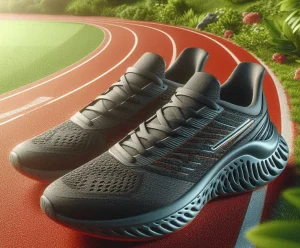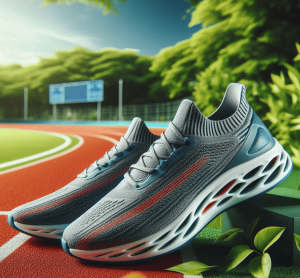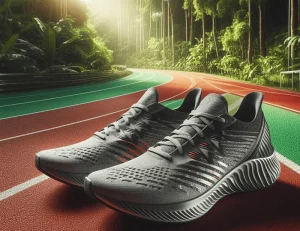What are “Shin-splints?”
Shin-splints appear on the medial (big toe side) and posterior (back side) of the shin bone. This is when the tibialis posterior muscle pulls away from the back of the tibia (shin bone). This shearing happens when the arch starts to fall, and the muscle is repetitively over-stretched with the pounding of running. It can be very painful and lead to worse injuries.
Who gets them?
People who run a lot get them…like lacrosse players. It usually happens when they increase their running and the body suddenly cannot repair itself fast enough for the tearing down of the tissues caused by the increase in training.
An anatomical description:
The tibialis posterior runs from the top back of the tibia, down, through the top of the foot on the interior of the ankle, to attach on the bottom of a small bone that makes part of the arch of the foot. As pounding/running increases, each time the foot hits the ground, the arch gives a little. Each time this pulls on the muscle, it pulls it down along the back of the shin bone. This shearing or pulling can actually start to pull the muscle off of where it attaches there. This causes pain, inflammation, and weakening of the covering of the bone (periostium). If this is let go long enough, the bone can become weakened and lead to stress fractures as well as complete fracture.
What else could it be?
Doctors need to have 3 differential diagnoses when they look at the problem. When looking at shin pain, some things that need to be ruled out are:
1.Fracture (stress or frank)
2.Anterior compartment syndrome
3.Pathology- neoplasm…the big C. Rare, but possible.
X-ray Findings:
The doctor may take an x-ray. Not a bad idea. Make sure the pelvis is covered with a lead shield. Fracture and shin-splints, many times, can be seen on x-ray. So can neoplasm. Anterior compartment syndrome cannot be seen on x-ray. It is a potentially very dangerous problem, and should not be left to “go away on its own”. That needs a pressure releasing procedure. See a doctor. Neoplasm, well, would be a very sad thing, but luckily it’s pretty rare.
Tell the difference between Shin-splints and Anterior Compartment Syndrome:
Shin splints are on the big toe side of the shin bone. This hurts when you first start to run, and, in the early stages, the pain goes away once warmed up. I will talk, later, about how you can take care of a lot of this yourself.
Anterior Compartment syndrome is on the outside of the shin bone, toward the pinky toe. It will give you a feeling of fullness, heat, and tearing pain. This needs immediate medical attention.
Is Shin-splint pain harmless?
Should I encourage my daughter to tough it out? No! If she’s tough enough and it’s left long enough, it can lead to a weakening of the bone… leading to micro fractures, stress fractures, then outright breaking of the tibia! Ouch!
Take Time Off from Play?
That depends on how far it’s gone! Ask me. If we catch it early, then no, you don’t have to stop playing. I have some great ways she can help herself get through this, playing all the while.
Self care:
Materials:
oMake Dixie cup ice cubes. Yes, get a box and make a dozen, and stick them in your freezer
oGrab 2 on your way to practice. Use on the way there, and one on the way back. Put the second one in a cooler so melting is minimul.
oA towel… hand size is fine
oTraumeel ointment. I don’t sell this, but you can find it at http://www.heelusa.com
It is something you should keep in your lacrosse bag! Amazing stuff for boo-boos!
oGet arch supports!
I recommend Spenco Full Length soft arch cushion insoles. They are soft, and that’s important for many people. Search them up on the internet They should not cost more than $15.
Every Morning:
After you get up and take a shower, and walk around a bit: Do calf raises. You can hold on for balance while you: stand on one leg, tucking the other behind your knee. Push up to tip-toe position and hold for 2 full second. Repeat 20 times on each leg at first. Work up to 40 times on each leg.
What to do in the car on the way to practice:
Bring 2 dixie cup ice cubes in the car on the way to practice. Save one in a cooler for after practice. Take the other, and peel away the lips of the cup so the top of the ice cube is exposed, and you can grip the cup, and not the actual ice cube.
Place a towel flat on the floor of the car. Place your bare feet on top of the towel.
Use one Dixie cup worth of ice… about half on each shin. Rub up and down on the area of pain. It will drip all over the place. First it will feel cold. Then it will throb. Then it will go numb. This should take 3-5 minutes per side. Just use half the ice cube on one side and go to the other.
The entire time you are doing the icing, do toe taps. That is: While you rub the ice cube up and down, tap your toe as if you are impatient. You should do no less than 100 toe taps, and no more than 200 on each side.
Now, make sure the towel is flat on the floor. Use your toes to try to scrunch up the towel into a wad. Make sure the whole thing is all wrinkled up. It will take some work. Do it 3 times, straightening out in between each “scrunching”.
Now use the Traumeel. Use about an inch of the ointment. Divide it in half, and rub half on each shin.
Repeat this after practice on your way home.
Every Evening:
Do calf raises. You can hold on for balance while you: stand on one leg, tucking the other behind your knee. Push up to tip-toe position and hold for 2 full second. Repeat 20 times on each leg at first. Work up to 40 times on each leg.
If you do all of this every day morning, before practice, after practice, and before bed… your shin splints should be gone in 2 weeks. If they are not, please contact me for further ideas.






More Stories
Unveiling the NBA’s Hottest Free Agents: A Seasonal Spectacle
Highlighting the Biggest EPL Fixtures of the Year
How the FIFA Points Table Shapes the Tournament Narrative